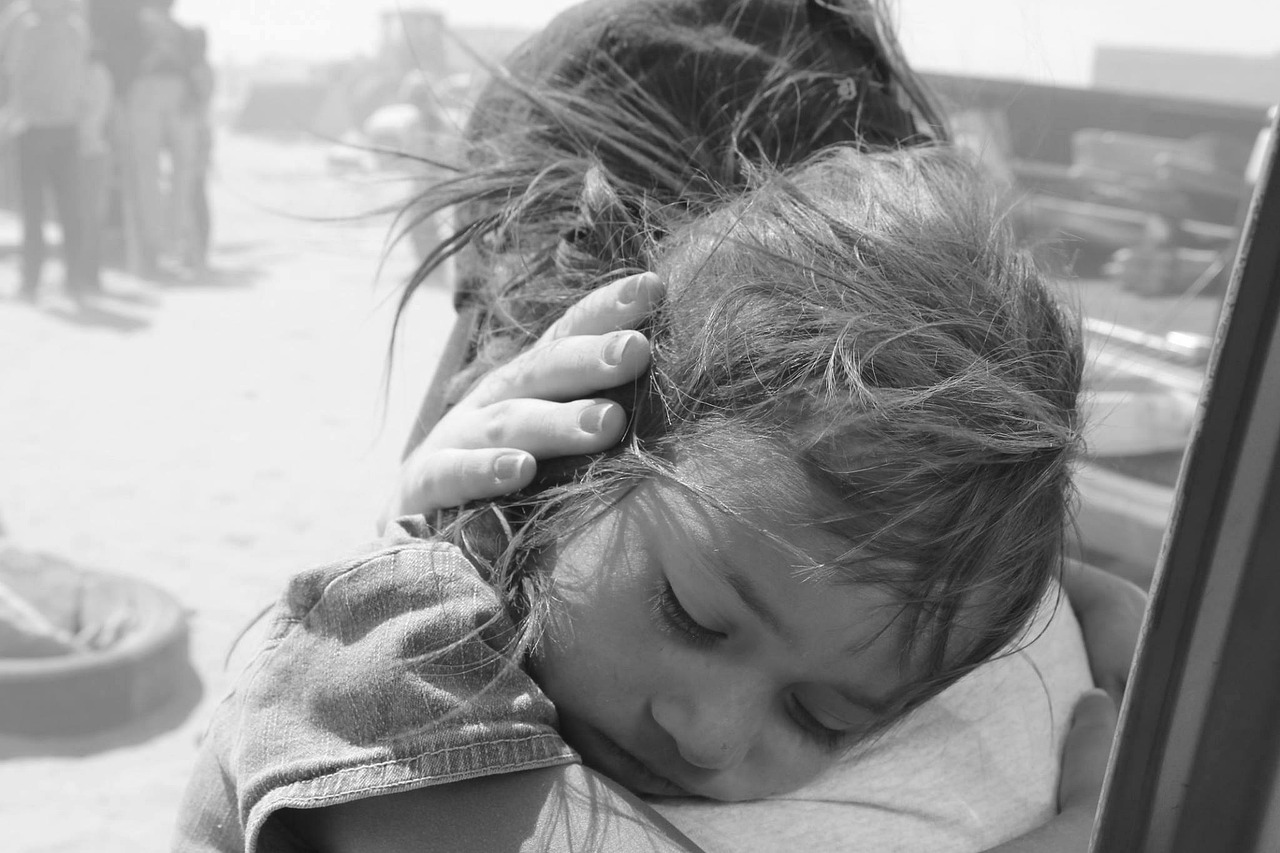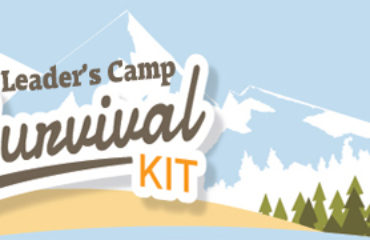(Here is part three of our list of tips for short-term mission trips. CLICK HERE for part one and CLICK HERE for part two)
The initial set of tips I’ve shared focuses on pre-trip preparations and ensuring your team is ready and able to reach your destination. Now, I’d like to pivot to advice for once you’re actively on the mission trip. These suggestions are universal but might be particularly relevant for those undertaking complex international mission trips. Leading a group on a foreign mission trip can be an intense and demanding experience – something I’m intimately familiar with. Guiding as many as 36 people through the Amazon Jungle (and other locations over the years) taught me invaluable lessons, not least of which is how to thrive amidst the challenges without succumbing to burnout or overwhelming stress.
It became apparent to me that micromanaging every detail was neither feasible nor healthy. Early in my experiences, I tried to be involved in every choice and conversation, which likely made the trips harder for everyone. Eventually, I understood the importance of delegation and trust – recognizing that I was part of a team of competent leaders and, ultimately, that God was overseeing it all. This shift in perspective significantly improved our experiences.
I learned to ease my grip on certain aspects, such as meals, trusting them to the mission agency after communicating our needs and preferences. My focus shifted away from minutiae like how worship will be done – I delegated that – towards more areas that are better suited for my strengths. I concentrated on nightly debriefs and teachings, fostering a positive team culture, ensuring encouragement over complaints, and maintaining oversight on logistical matters like everyone’s whereabouts. I stuck to the bigger picture, making sure our team was moving forward with the trips’ purpose. This allowed our team to progress daily while leaving the specifics to my leaders or the agency. For someone like me who is naturally inclined to control, this approach was both challenging and freeing, showcasing daily how God seamlessly orchestrated our efforts.
Here are five additional insights I gained from leading mission trips, which may help you during your next mission endeavor:
Eleventh: Create the Buddy System
If you have a bigger group, it is impossible to keep track of every person all the time. And with traveling through airports and buses and everything else you need to have a quick and simple system to make sure when you people are all together (especially during traveling). So, I came up with the “buddy system.” Basically, everyone gets into a buddy of 2-3 people before the trip (bigger teams are 3, but if you have less than 20 in groups of 2 and ALWAYS the same gender). How it worked is when I yelled, “BUDDY!” everyone had to physically grab the hand of their buddies and hold them up. This way, I only needed to keep track of 1/3 of the group rather than every individual.
Yes, we played it off as having some fun with it because I would yell BUDDY in the most random of places before the trip. I explained the importance of the buddy system and why we do it. It is for everyone’s protection. If your buddy has to go the bathroom… so you do you! If your buddy is lost… so are you! If your buddy gets held back at the airport, what do you do? You wait for them! There is never a moment you don’t know where your buddy is. We trained with the buddy system by testing it before the trip. At meals, during youth group even, and during our team meetings. I made sure they got the importance of this.
I can tell you this system has saved lives. A few times, an individual was left behind while we were going through airport security or something else. I would yell “Buddy”, and we would have a group missing, and I might not have noticed if it wasn’t for several people missing. I played it off as corny and cheesy, but it worked, and the students really got into it (because I and the leaders do as well)!
Twelve: Travel With a Human Engine and Caboose
This is another travel trip like the buddy system; it’s simple but worth it. If you are traveling with a big group, it’s hard to get 20+ people through airport security or anything like that. As the leader, you cannot keep looking back to make sure everyone is there; otherwise, it slows the whole thing down, and airplanes won’t wait for you… believe me, I know. So I always run with an engine and caboose. Being the leader with the travel plans is always the engine, meaning I always go first – no one goes before me. Even if they are ready and done with their tasks, they wait for me. The engine makes the decisions on where and when to go. But you also need a caboose, so for every trip, I choose an adult male leader to be the caboose. His job is solely to make sure he is ALWAYS the last person, no matter what. He waits for everyone, always goes last in line, and never leaves anyone behind. This adult leader needs to be very trusted and fully understand his position. He also needs to know it’s a bit of a sacrifice because he might not be able to see all that the rest of the group sees because they are moving on and so he misses some of the tourist stuff. But when you, the leader (engine), look back and see him, you know everyone is between you, and you can rest easy.
Thirteen: Never Underestimate Your Team’s Hunger & Thirst
Nothing can impact your team’s experience and effectiveness more significantly (aside from God) than hunger and thirst. While they can endure delays, cancellations, or even rain that impacts their plans, if your team is constantly hungry or thirsty, the trip can quickly turn sour. I’m not referencing basic sustenance like bread and water, nor am I suggesting lavish feasts. It’s essential that everyone has enough good food to eat at EACH meal. I’ve been on too many trips where either the agency or I failed to budget adequate food, leading to insufficient portions or even some team members going hungry. As for thirst, inadequate water supplies are not only irresponsible but dangerous. If you’re working within a tight budget, prioritize ample, nutritious food and hydration above almost everything else.
Meeting these physical needs directly influences attitudes, energy levels, and willingness to engage and grow. When their basic needs aren’t met, people start to neglect their spiritual and emotional needs, becoming toxic and prone to complain. This negativity can spread like cancer through the team. Conversely, a well-fed and hydrated team member can be stretched and challenged beyond their limits, often maintaining a positive attitude.
There’s also a distinction between just having food and having GOOD food. You don’t need to spoil your team, but providing enjoyable meals ensures they have the energy to serve effectively throughout the day. It also shows your application for their service, and it’s a way for them to get energized by enjoying some good food as a group. Simple upgrades, like adding meatballs to spaghetti or including dessert, can make a significant difference. You’ll be surprised how much this impacts your team’s morale and the overall success of your mission.
Fourteen: Form Ministry Teams
This tip also falls into the “before the trip” category, but it’s really lived out while on the trip itself. Basically, to help manage a big group of people and help people experience the trip more efficiently, divide everyone, including leaders, into ministry teams. Each team has a different responsibility during the trip. I try to have at least one adult leader on each team, but I encourage those adult leaders to let the students lead, and they are more likely to guide and help than lead the team. I coordinate with any agency or church I use to make sure every team has some responsibilities on the trip. (For example, if there is no kids’ ministry, I don’t form a kids’ ministry team.) When we are training for the trip, I give time during our meetings for teams to meet and plan what they will be doing. I am always please to see who sets up and shows some true leadership during these teams because I do require each team to pick a leader as their first task. I do allow students to be on more than one team, but if they are the leader, that is the only team they can be on.
Here are the teams I usually have:
Kids Ministry – They plan, organize, and lead all things kids ministry. So if we have a VBS like event each day they make the schedule, plan the crafts, and teach the lesson. The whole rest of the mission trip team will help out with kids but this team will tell the rest of us what to do. This team requires the most prep before the trip.
Teach Team – This team oversees whenever there is teaching that needs to be done. They can give their testimony or plan a lesson or lead a Bible study. THis team also sometimes plans the daily devotions that our missions team does during the trip too.
Media Team – This team is in charge of taking pictures and video during the trip. They also help post regularly updates for people back home. Sometimes I bring camera equipment stuff but most times they have their own.
Worship Team – Handles all worship for the trip. Either during our nightly debriefs or while supporting kids’ ministry for their VBS songs. Anything worship falls on this team.
Support Team – This team is the heavy lifters. They are called support because they support the other teams. They are in charge of getting the luggage on and off the bus, setting up the chairs for our meetings, helping the locals with the manual labor if needed, and carrying the ministry supplies to the location for the kid’s ministry. Basically, anything that needs to be set up, this team does it. DON’T FORGET THIS TEAM! It saves you tons of energy and time if you simply tell the team what needs to be done instead of looking for volunteers all the time just for the manual labor stuff.
One of the best benefits of ministry teams is your team gets to use their strengths and spiritual gifts in ways that match their passions. Because they get to choose which team to be on some stretch themselves and choose teams that is hard for them and some choose based on their experience or skill sets. Either way it’s fun to watch them step up and be used by God during the trip!
Fifteen: Have a Plan After The Trip (Recap)
It’s easy to do a trip, come home, and move on, but I have found that two events need to happen after EVERY mission trip. These two events help solidify or even make a bigger impact on your team than you realize. So I communicate, prioritize, and schedule these events before we even leave on the trip.
First, I plan what I call a “recap party.” I call it a party because we usually celebrate what God did on the trip with a cake or some kind of treat! I will try to have a recap party within a week of coming home. I make it fun and invite the whole team (not families at this one) to share what life is like now that they are back “to normal.” We share stories that are funny, serious, and everything in between. I ask them what God taught on the trip or how they are different now that they went. It always starts light with funny stories and inside jokes, but it always ends with a deep discussion. I end with a final challenge and prayer for the team.
Second, a sharing time for the church. I coordinate with the church and parents BEFORE we even leave. Either a Sunday morning or another night of the week. We invite everyone to come and hear about our experience. So family, friends, support letter recipients, donors, and anyone else. I try to plan for 1 hour or 1.5 hours max. Usually, what works best is when we show our recap video that we make (3-5 minutes), give a history on how and why we chose the location or agency we did, and then have a few students prepare a short experience story to share. Then I always end with an open Q and A with the whole team sitting on the stage. I am the emcee and they pass around a mic. I try to keep things moving and on track (it’s easy for the team to shart sharing inside jokes or stories that require way too much context). This allows students who might not share to share a chance to share and for families to hear how the team experienced the trip in an authentic way.
I also always including pictures while sharing. Pictures are just as important than any story you share! It’s that impactful. So I collect all the best pictures and show them throughout the whole time sharing. They are usually on a loop that goes over and over again. Sometimes, I share almost 100 pictures!
BONUS: Always Send Thank You letters!
Just like our support letters, I write up a brief but highly editable thank you letter and have everyone edit it and print it out. I then give them a list of all the people who donated to their trip so they can receive a thank you letter. And just like I do with support letters, collecting all the letters and mailing them out together, I do that with thank you letters. If someone donated a few hundred dollars, isn’t it just polite and the right thing to do for them to get a personalized thank you letter after the trip? Of course. So, DO NOT trust or expect the students or their families to do it on their own. Include this in your planning – I have made that mistake too many times.





